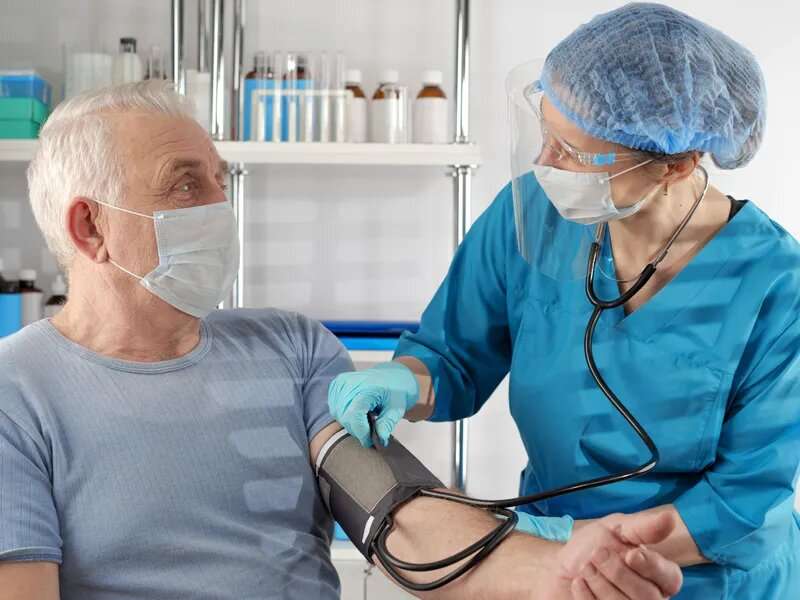
In a mix of bad and good news, a new large study confirms that COVID can raise the risks of new-onset heart trouble and diabetes—though those threats typically wane again after a few months.
The study, of nearly 430,000 British COVID patients, found that the risks of suffering a blood clot or heartbeat irregularity shot up substantially for a month post-infection. After that, the heart risks dropped sharply, but remained somewhat elevated for another two months.
A slightly different pattern was seen with diabetes: New diagnoses rose in the month after a COVID diagnosis, then declined gradually over the next two months before returning to normal.
Experts said the findings confirm what’s been known about the potential consequences of COVID—and give a sense of the time frame for those risks.
“People tend to focus on the risk of death from COVID, and to a lesser extent hospitalization,” said Dr. Bruce Y. Lee, of CUNY Graduate School of Public Health and Health Policy in New York City.
“But we have to remember that there are other serious outcomes, too,” said Lee, who was not involved in the research.
People should consider those risks, he said, when making decisions about masking, vaccinations and boosters.
The study, published July 19 in the journal PLOS Medicine, examined electronic medical records from U.K. primary care patients. More than 428,000 had been diagnosed with COVID in 2020 or 2021 and had no history of diabetes or heart disease. Each of those patients was compared with another patient from the same primary care practice who was the same sex and age, but who had not been diagnosed with COVID.
Overall, the researchers found, COVID patients were five to 11 times more likely than the comparison group to develop a blood clot in the veins or lungs for one month after being diagnosed with the infection.
Their risk of developing an atrial arrhythmia, meanwhile, was over sixfold higher. That refers to an irregular heartbeat affecting the heart’s upper chambers, which can cause symptoms such as palpitations, fatigue and dizziness.
After the first month, all of those heart risks dropped sharply, but remained somewhat elevated over the next two months.
COVID patients were also more likely to be newly diagnosed with diabetes, with an 81% higher incidence in the first post-infection month. That excess risk declined over the next two months before returning to normal.
In the first month, about 24 out of every 100,000 were diagnosed with diabetes each week, for example. But that compared with only nine out of every 100,000 primary care patients without COVID.
As for the question of why, other research gives some clues, said lead researcher Emma Rezel-Potts, of King’s College London.
“The virus is believed to trigger events which can affect multiple systems in the body, including a dysregulated immune response and cell dysfunction,” Rezel-Potts explained.
In the case of diabetes, she said, the virus might infect pancreatic cells, which produce the hormone insulin. (Type 2 diabetes, the most common form, arises when the body is unable use insulin properly.)
There are other potential explanations, too, Rezel-Potts said. In some cases, COVID might keep people off their feet for so long, the inactivity worsens existing insulin resistance — a precursor to type 2 diabetes. It’s also possible that previously undiagnosed diabetes is being caught.
What’s not clear is whether people who developed cardiovascular trouble or diabetes were more seriously ill with COVID. Rezel-Potts said the medical records had no information on severity, including whether patients ended up in the hospital.
The good news, according Rezel-Potts, is that the heightened risks do go down. But people should be aware, she said, that the incidence of diabetes, in particular, stays elevated for about three months.
That could be a “critical period,” Rezel-Potts said, for eating healthy and trying to get some exercise.
One limitation of the study is that people with COVID were infected earlier in the pandemic, before Omicron emerged. Today’s variants are different, Lee said, and so are some other factors: Many people are further out from their vaccination, and many have abandoned precautions like mask-wearing, which can at least lower the viral “dose” to which they are exposed.
Source: Read Full Article
